Boxwood has it all. Most railway gardeners plant evergreen boxwood for its versatility, vigor, and varieties (more than 90). Pick a shape: globe, lollypop, hedge, or gnarled bonsai. Michele Tempinski pruned many box shrubs into scale trees (photo 1). Whereas dwarf conifers, like juniper and spruce, have an overall fuzzy or conical appearance for distant hills, boxwood’s bright, broad leaves catch the sun, shine along streets, and snug against houses. We’ll also show some boxwood look-alikes for those in high and low zones.
Why mess with success?
Boxwood is the broadleaf alternative to dwarf Alberta spruce for our garden railways. Both evergreens may be “overused,” but why fight it when we see how easily they grow in sun or shade? Your local nurseries will usually offer boxwood because they expect tough box to flourish.
Rugged boxwood grows in the mid range of USDA Hardiness Zones, from the northern Zone 5 to the warmer Zone 9 (and, given extra water and shade, in Zone 10). Some garden nurseries list box as Zones 4-9, proving it’s possible to grow boxwood in lower Zones, but the plants may need some winter protection. All plants mentioned in the sidebar will tolerate a spell without watering. They also need well-drained soil that has been amended with sand, perlite, or similar gravelly material to prevent root rot.
The art of sculpting
To learn how to prune in the topiary style, follow Todd Brody’s lesson in this issue’s Regional report. To get a start opening up your broadleaf shrubs like Michelle’s, follow the directions in “Greening…” February, 2017. Michelle says that she prunes deep into the little tree to cut off whole branches, rather than cutting only the tips. She calls it pruning “inside out” to leave an open, airy look.
Plan when to cut the stems, to give you a nice shape without showing brown leaves that are cut in half due to recent pruning. If you want to hide your pruning cuts, reach in with pointed pruners and cut the stems only. Richard Zell’s tree in photo 2 shows off attractive, shiny, light-green new growth, just in time for the open house. Cut at least two weeks prior to a showing. Whether you like a loose, airy tree (photo 1), geometric ball (photo 2), or forested clumps (photo 3), box are easy and grow slowly.
One genus at a time
This issue is only the fourth time in 10 years that “Greening…” has devoted an entire column to a single genus: juniperus (juniper, December 2009), sedum (stonecrop, June 2013), thymus (thyme, August 2015), and buxus (boxwood). These offer loads of variety.
Boxwood 101
It pays to get schooled in the boxwoods you grow. This site defines many box species: http://mysoulfulhome.com/garden-projects/boxwood-shrubs-varieties-characteristics/
If you were expecting to prune once a year, but ended up with one of the faster-growing types, you’ll be trimming 6″ of growth off regularly.
English boxwood tends to grow upright. Its leaves are more oval than round. If you need a narrow screen at the rear or a “peekaboo” plant up front, B.sempervirens ‘Graham Blandy’ and B.s. ‘Green Tower’ look similar to the holly in photo 4. A slow growing, narrow boxwood is the willow-leaf box, Buxus sempervirens ‘Salicifolia Elata’. B.s. ‘Suffruticosa’ (Zones 6-8 or 9) characteristically goes against its sempervirens (always green) name and gets bronze foliage during winter or when it’s stressed. Seasonal changes add interest when we understand that other pigments temporarily mask the green.
Japanese boxwood, called little-leaf boxwood (Buxus microphylla var. japonica), contains cultivars that stay small in stature, too. Distinguished by tight growth, you’ll know a miniature when you find almost no space between leaves. Buxus m.j. ‘Morris Midget’ (“Plant portraits”) attains only one foot of height in 10 years. Even smaller, my B.m.j. ‘Kingsville’ (Sue Piper’s Regional report) has grown to 6″ high in 15 years—no pruning ever. Buxus ‘Green Gem’ and B. ‘Greenmound’ (both compact varieties) retain dark-green leaves well in cold winters and grow only 2′ tall and wide in Zones 4-8.
Box alternatives
Here are some box-like woody shrubs, other than holly (photo 4) and Todd Brody’s regional report on myrtle. For high-heat zones, boxleaf euonymus (photo 5) looks similar and comes in every variation (photo 6). In Canada’s low zones, the deciduous pea shrub takes on the boxwood look (photo 7).
Boxwood works hard, repels deer, and recovers from stress. Maybe it deserves a bit more respect. Let its variability help you think outside the box (photo 8).
How do you care for your boxwood or box look-alikes?
Todd Brody
San Diego, California, Zone 10
Gee-ah’-ma tree
Our Tortoise & Lizard Bash Garden Railroad is distinguished by the topiary work on eight dwarf myrtles (Myrtus communis ‘Compacta’, Zones 8-11), originally grown at Monrovia Nurseries. I planted them in 1998 from one-gallon cans, which makes them more than 20 years old now. For the first 10 years of their lives, I trimmed the new growth at the tips of each stem to keep them manageable, but they became too full.
Choosing a style. I decided that I would trim them into “pom” trees, named for the “pom poms” used by cheerleaders. For each plant, I cut all but a few trunks down to the ground, leaving the strongest that would give the desired spread. Then I cut the ends off of the remaining trunks and stripped the lower trunk clean of growth up to a point several inches below the cut tips. Look for a point where the trunk naturally branches and leave it be from there to the tip where new branches will form.
Two-to-three months later, the plant is revived and ready to shape. This is a matter of hand stripping any new growth off of the trunks and cutting back the new growth in the established canopy. For a full, healthy plant, all of the new growth should be cut. Those branches that extend beyond the “desired shape” should be cut back into place. Each branch that has its tip cut will reward you with several new branches near the cut point. As they grow out like porcupine quills, cut these back to the shape.
When the shapes fill out, it is no longer necessary (or possible) to cut the interior branches and the focus becomes keeping the shape in a dense, compact size. Removing this surface layer will expose a layer of lighter-colored green leaves of smaller size. If you cut too deep, you will lose this under-layer of leaves, revealing the stems beneath.
Changing an established shape. On two of my myrtles, I cut the poms into boxes (my version of “boxwoods”) by trimming away portions of the spheres, thus squaring them up. The transformation took less than two years.
I usually prune my myrtles four times a year. I hold an open house in June and will give them their first cut of the year in February, followed up in May, about a month before open house, then again in September/October. I trim about 3-4 weeks before an open house because the tips will initially go brown. Any longer and the plant produces “quills” that stick out.
The trees rarely flower when cut in this manner because the flower buds are removed before they can open. I believe that this has helped to keep the trees small and prolongs their lives. I’m thinking that I may just cut the poms on one of the trees into various geometric shapes. Then when people ask, “What’s that?” I’ll tell them “It’s a geom-e-tree”.
Bill Hewitt
Mansfield, Massachusetts, Zone 5
No babies here
We do get some cold weather in New England. I try to buy only the plants that will survive in our conditions. I don’t have the time to “baby” anything. If it won’t survive here and I have to have it, I keep it potted and move it indoors for the winter. Boxwoods will get some extra mulch for the winter or some shielding from winter burn. [Boxwoods make decent indoor plants, given bright light.—Ed.]
Sue Piper
Lakeside, California, Zone 10
Kingsville hedge
The boxwoods have always been a favorite for hedges and shrubs in our railroad. When water usage became a big concern last summer, they proved themselves invaluable by surviving the mandatory irrigation cutbacks. Plant these little guys in a row and, with some patience and regular trimming, you’ll have a beautiful hedge that is sure to get lots of compliments from visitors!
Ray Turner
San Jose, California, Zone 9
Morris Midget
This boxwood is about three years old. It grows slowly into a nice ball-shaped tree. This one is in the engine-service area of my North End yard. The water/coal service structure is a repurposed Bachmann 10-wheeler tender. Note the photographer next to the boxwood waiting for the passenger run, due any moment.





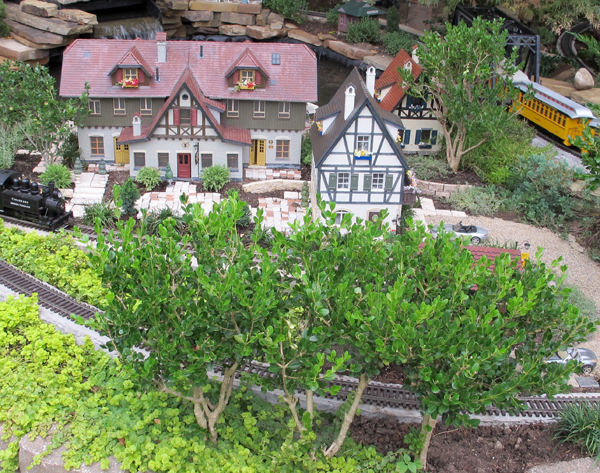
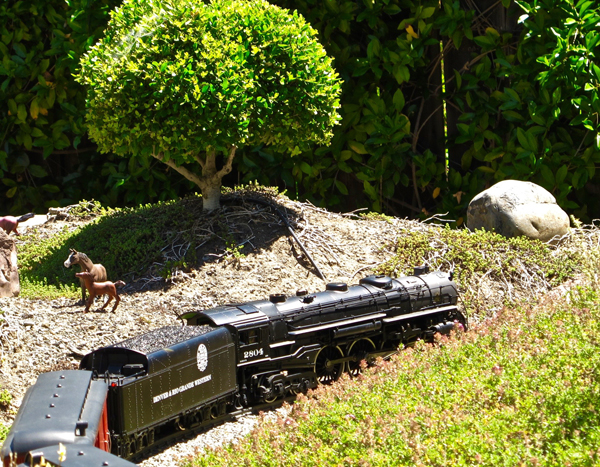
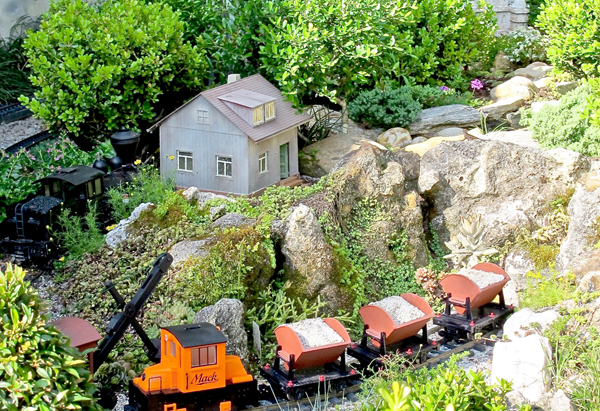
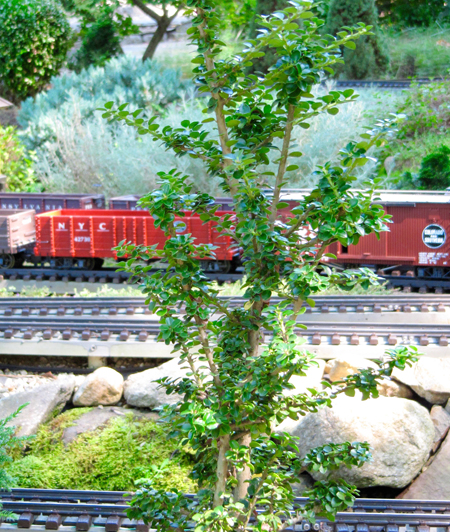
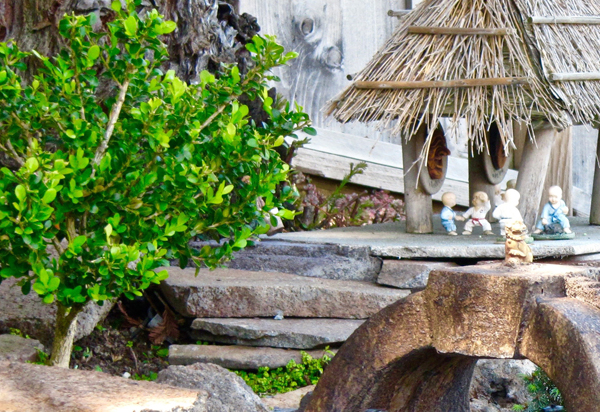
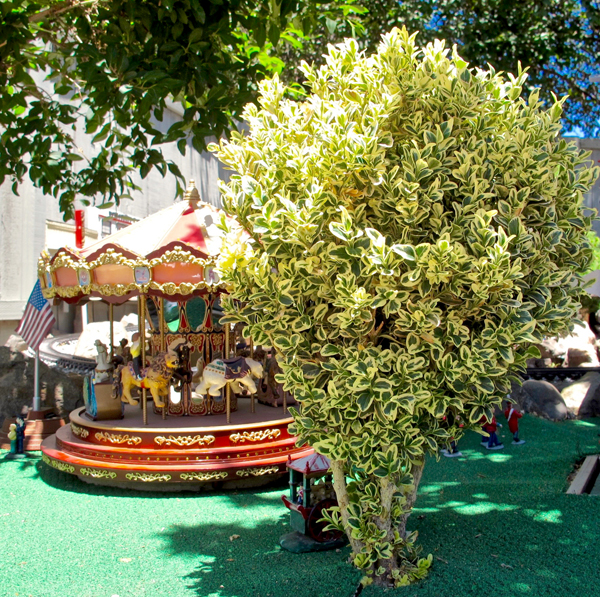
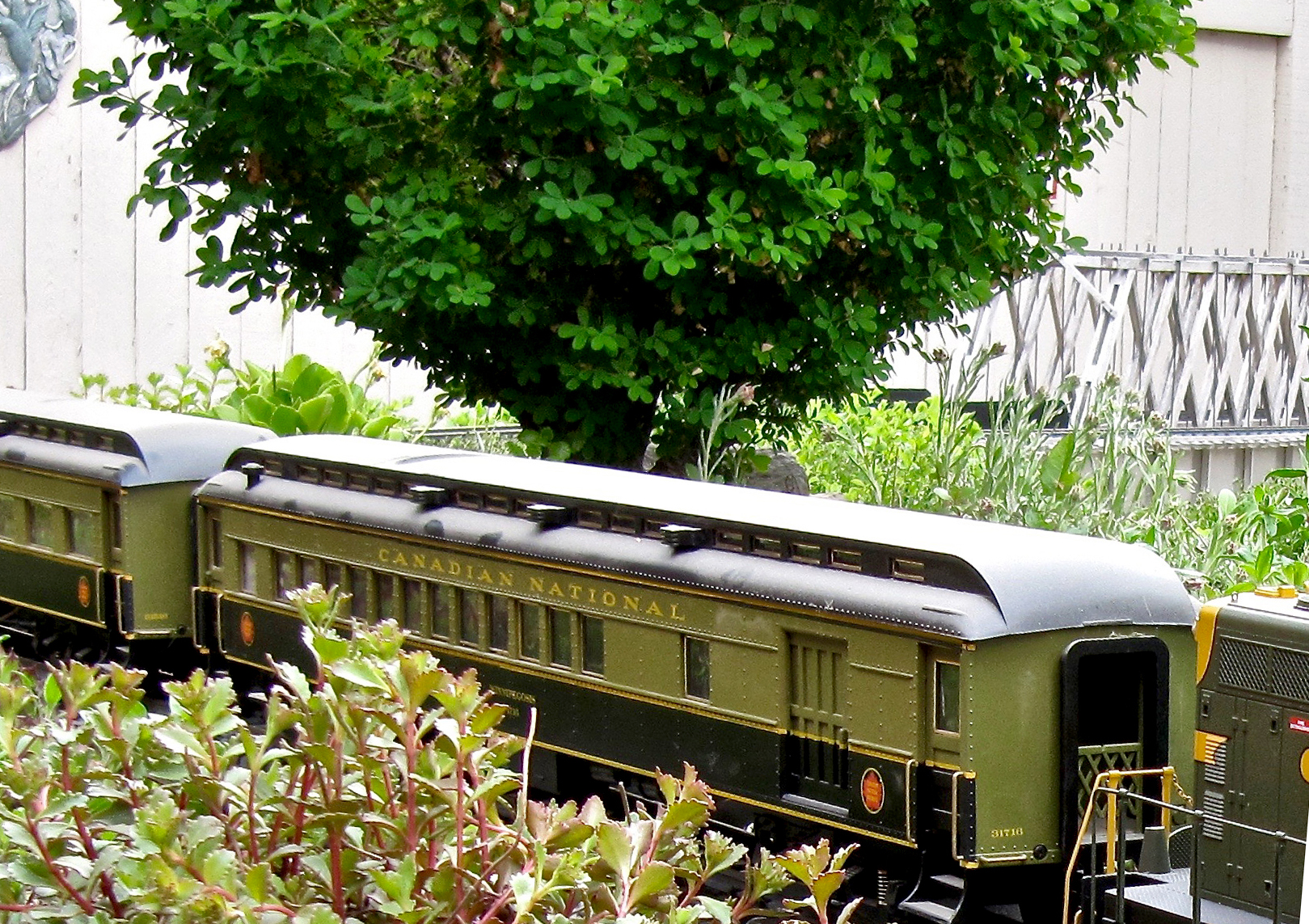
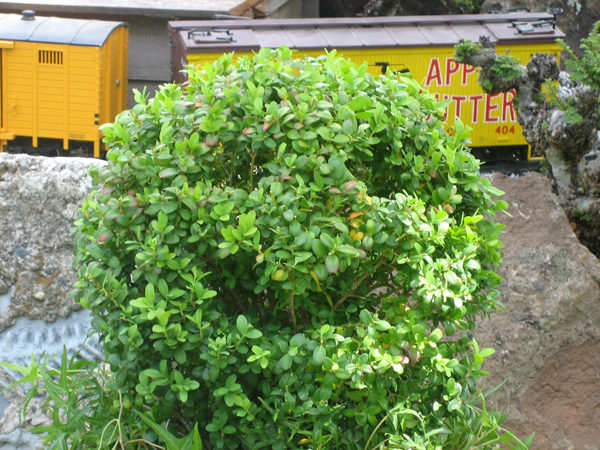

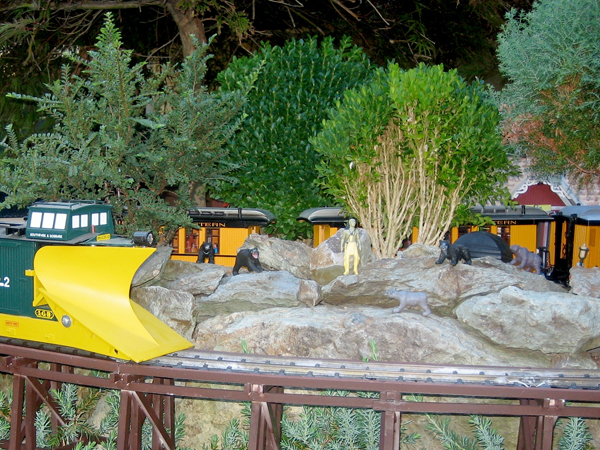
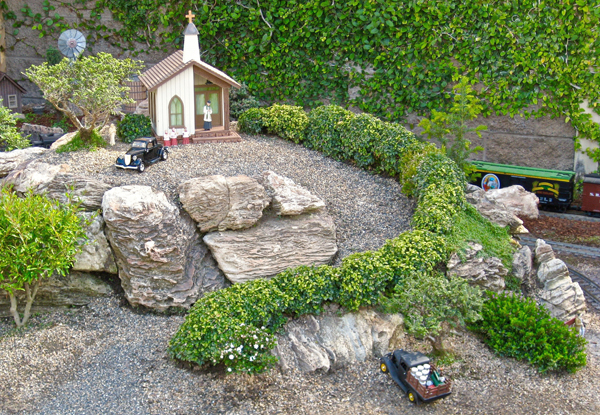
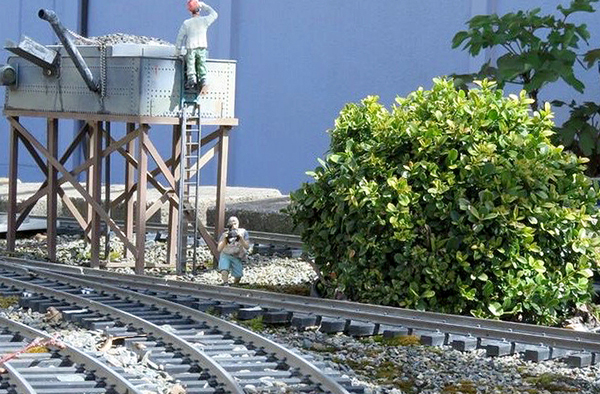

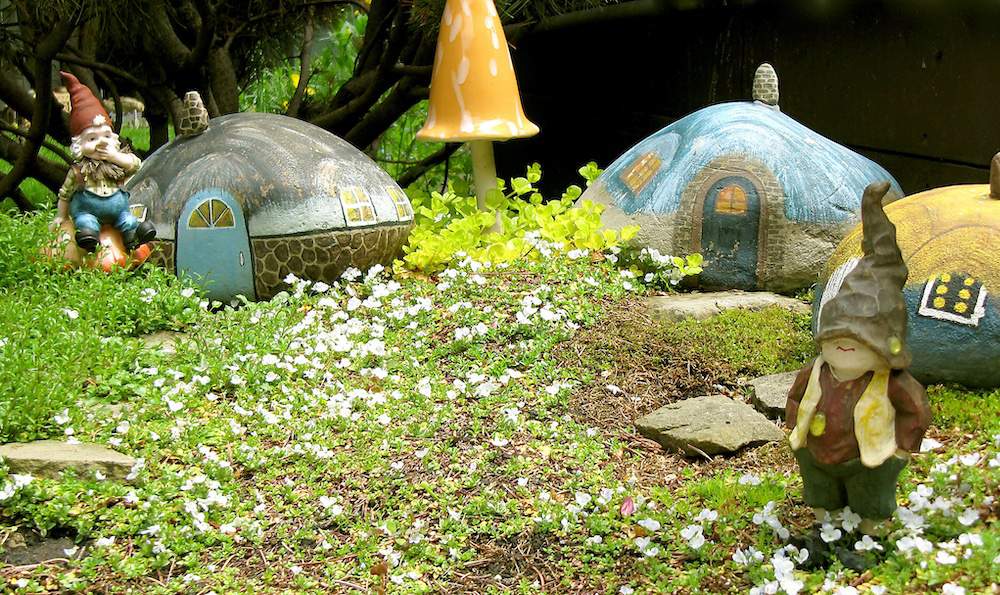
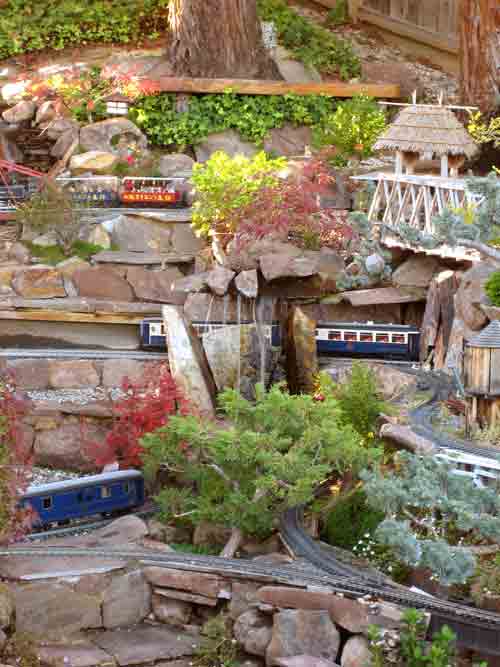
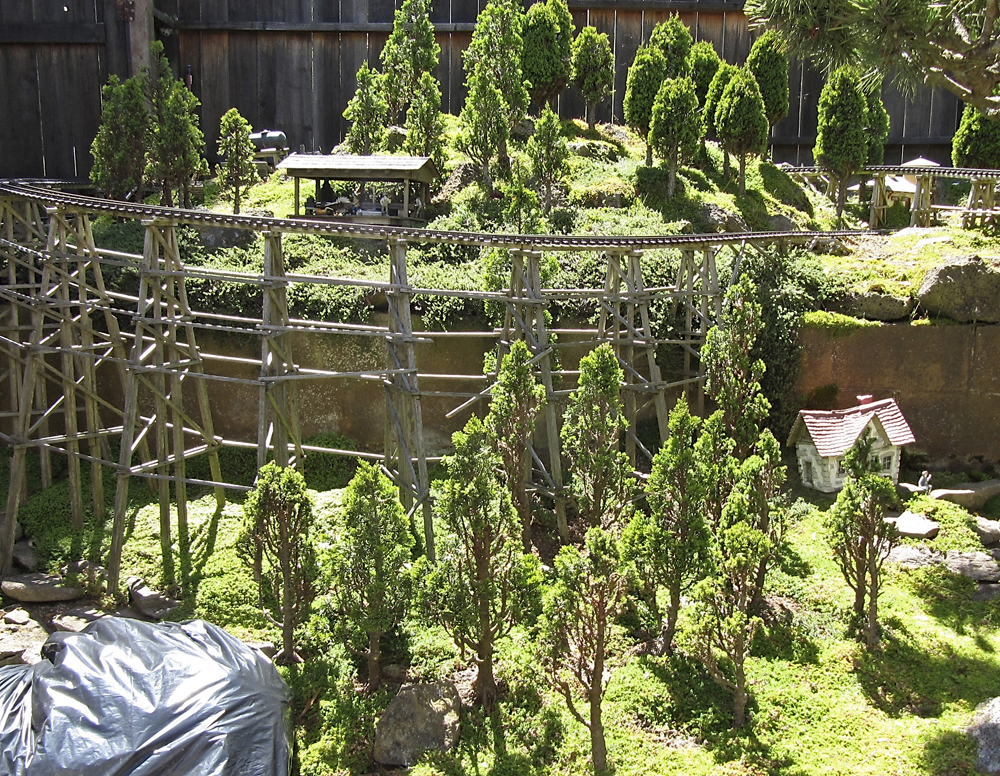
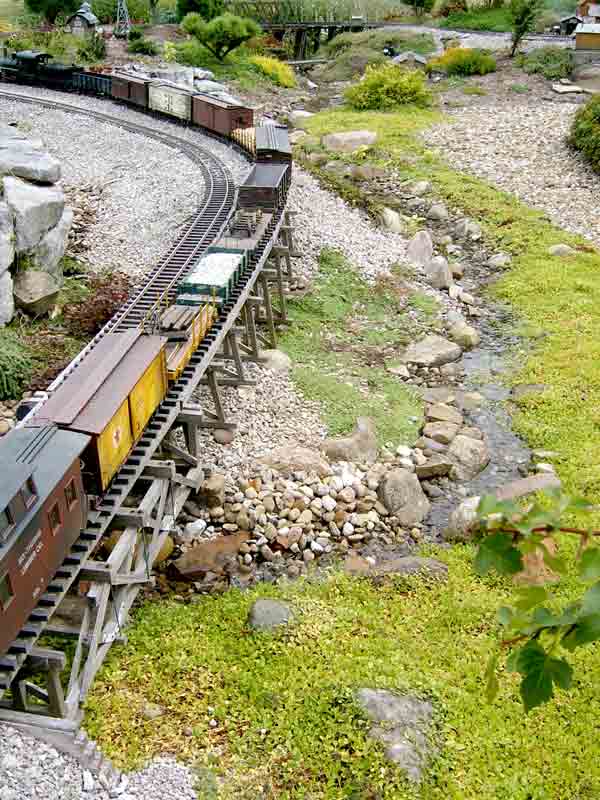




Happy holidays to all of you good rail road buddies from the brass hat of the Beer Valley ry